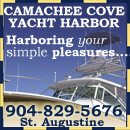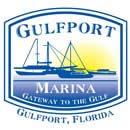Medical Emergencies at Sea by Anthony Pozun
Medical Emergencies at Sea
Anthony Pozun, B.S., R.N.
I am a retired Detective Sergeant, from the Nassau County Police Department, having served thirty-five years. Twenty of those years were as a patrol officer responding to hundreds of calls for medical emergencies. I was a Certified First Responder, and Emergency Medical Technician (EMT). While assigned to the Police academy I was a master instructor of basic and advanced first aid, EMT and mental health training. I currently have a NYS license in professional Nursing (RN). I am a current member of the Northport Yacht Club, Northport NY, where I am on the training committee. I also teach Basic Boating and Sailing courses for the Neptune Sail and Power Squadron (United States Power Squadrons) in Northport. I have been a boater and sailor for some fifty years. I currently sail and cruise with my wife on our Catalina C 400 Mystical Paradise.
Now that the boating season is ending, it may be worthwhile to think about vital information for next season. Many of us who boat love its sense of adventure, enjoyment and freedom. When we go out on our vessels though we leave the safety and convenience of our home and face many different challenges. One of the most challenging is medical emergencies at sea. Whether we boat close to home in a bay, sound, coastal or long distances, the time speed and distances involved, limits our ability in seeking and receiving outside medical help in an emergency. Whereas on land we may get help in a matter of minutes, on the water it may be indeed many minutes or hours before receiving professional help. To an extent we must learn to become self-sufficient. This includes having some basic knowledge of first aid.
Modern medicine has had amazing medical advances throughout the years. It is equally amazing though how little has changed about emergency medical
care away from home. This article is not meant to recommend specific recommendations regarding medical aid at sea, but give a practical approach in obtaining enough knowledge of emergency care, and keeping some useful equipment on board for use during an emergency
For this article I will address two categories of how most of us boat.
1. Local boating where nearby friends, crew can render aid, or summons help quickly. And professionals may render aid in timely manner.
2. Coastal cruising away from home perhaps hours away from help.
Within these two categories you will be able to communicate with medical personnel, and or deliver a sick or injured to an emergency room within hours. Most common on-board emergencies though will be treatable without outside assistance at least initially and limit further injury. To do these onboard treatments, you need a reference of medical knowledge, either yourself or a reference (book), and some basic medical equipment. Most of us may not have the necessary knowledge or the stamina to treat without some help and the following medical emergency references would be of value. Note any reference guide to be of any value should be read thoroughly before a situation happens. This is not a comprehensive list as there are hundreds of worthy publications available to those who do some research.
Advanced First aid American Red Cross
First Aid Afloat, by Doctors Eastman/ Levinson; ////
Pocket Emergency Medicine, by Hamdani;
First Aid Afloat by Robin Horworth;
On Board Medical Emergency Handbook by Briggs / Mackenzie;
First Aid Companion by, Hillincourt;
.
If you are unprepared for the emergency despite your knowledge and references available, your VHF and or cell phones should enable you to gain access to shore side medical advice. The local Police, Fire Departments, and or the Coast Guard may offer advice and or be able to put you in touch with doctors and other medical professionals.
Once you have made an informed decision that your knowledge, references and your ability are adequate to treat the current situation, you would probably need some medical supplies say as those in a good on-board medical kit. Many retailers, boating supply houses, specialty adventure type stores, even medical supply houses themselves offer
good quality (often expensive) medical kits. But all kits may not be specific to your usage and needs. With a bit of planning and research you can put together a kit specific to your needs and use. Your kit can be put in an ordinary plastic (doesn’t rust) tool or fishing tackle box, the size and type of which is according to your amount of supplies. Listed below are some necessary supplies. Some items must be prescribed by a doctor.
Medical Condition Item
Lacerations Iodine, Beta dyne
Alcohol preps
4 x 4 in gauze
Steristrips (stitching)
Assorted band aids
2in and 4in cotton rolls
½ in bandage tape
Triple Antibiotic ointment
Bactroban ointment
One pair sharp pint scissors
Tweezers, Forceps
Sea Sickness Meclizine, Transderm Scop patch Bonine, Dramamine
Wrist bands
Ginger tablets, coke syrup
Allergic Reactions Epi Pen (epinephrine.)
Epinephrine Bottle
Oral Benadryl 25mg tabs
Claritin tabs
Infection Augmentin 500 mg tabs
Doxycycline 100mg tabs v
Neosporin ointment
Neosporin ear suspension
Cipro 500mg tabs
Asthma attack Pro air albuterol inhaler
Prednisone
Cough Delsuym or another OTC medicine
Menthol cough drops
Anti-inflammatory/Pain Advil/Motrin/ ibuprofen
Aleve
Fever Tylenol extra strength tabs
Nasal congestion Afrin spray
Sudafed tabs
Minor burns, abrasions Bactine, Lanaicaine spray
Stings, bites Hydrocortisone ointment
Calamine Lotion
Ambesol
Gastric/Diarrhea Pepsid, Mylanta, Tums
Imodium, Charcoal tabs
Fractures/contusions Triangular bandage
Various splints/ splint bandage
Assorted ace bandage
Cardiac chest pain Aspirin 325 mgs
Cardiac patient /potential Ambu bag (forced air inflator)
Mouth air mask
Defibrillator
Some basic first aid, certainly not everything.
1. Attend to severe bleeding first. Remember DEPT: use clean gauze apply Direct pressure to wound; Elevate wound above the heart; apply Pressure to pressure points (brachial inside of bicep, femoral inside of thigh); apply Tourniquet just above wound***used only as a last resort, when if bleeding continues, person will die
2. Cardiac arrest /cessation of breathing/ call for immediate help, remember CAB
C Circulation, lack of heartbeat perform chest compressions
A Airway, clear airway of obstruction person on back /chin lift
B Breathing, listen and look chest movement if none start mouth to mouth
3.Wounds with impaled objects or imbedded glass/ do not remove object, cover with clean gauze, wrap loosely, do not apply any heavy ointment/crème. Clean wounds/ close wounds if possible, wrap to stop bleeding, keep immobilized, and keep out dirt.
4. Eye wounds/ protect eye keep out sun cover with gauze patch, do not cause pressure.
5. Bruises Contusions sprains/ apply ice immediately, ace bandage to immobilize, put no pressure on joint limb etc., and limit movement
6. Fractures/ Dislocations/ immobilize limb/ splint limb in place as found (never reset bone/ limb) use gauze cover to stop any bleed.
7. Burns/ if slight soak in cold water. Skin broken cover same with gauze (air hurts) do not apply ointment or cream, treat for shock (elevate feet)
8. Fainting spells/ have person lie down elevate feet. Monitor /watch breathing.
9. Heat poisoning and heat stroke/ remove from sun/heat, cool off slowly, give water sparingly
10. Ingested poisons substances/ give copious amounts of water; induce vomiting only if ingested substances are nonacid (may burn on way out).
11. Stings bites imbedded small objects spines/ clean area remove stinger or hook apply antibiotic/Ambesol, cover with clean gauze /band aid
In closing, boating can be great fun and freedom, but with that fun and freedom comes responsibility. Look into buying an emergency medical reference(s) to keep on board. Local book stores, Amazon and many online sites can get you what you will need. If you don’t have a first aid kit, buy or prepare one for the sake of yourself, your loved ones and crew on the boat. If you have never taken a first aid course or it’s been awhile since you took one, contact your local American Red Cross or local Fire Department and attend a basic first aid course. With a little preparation research and work on your part most emergencies at sea (wherever that is for you), can be handled without loss of life or limb. Happy and safe boating.
Anthony Pozun












Comments from Cruisers (1)